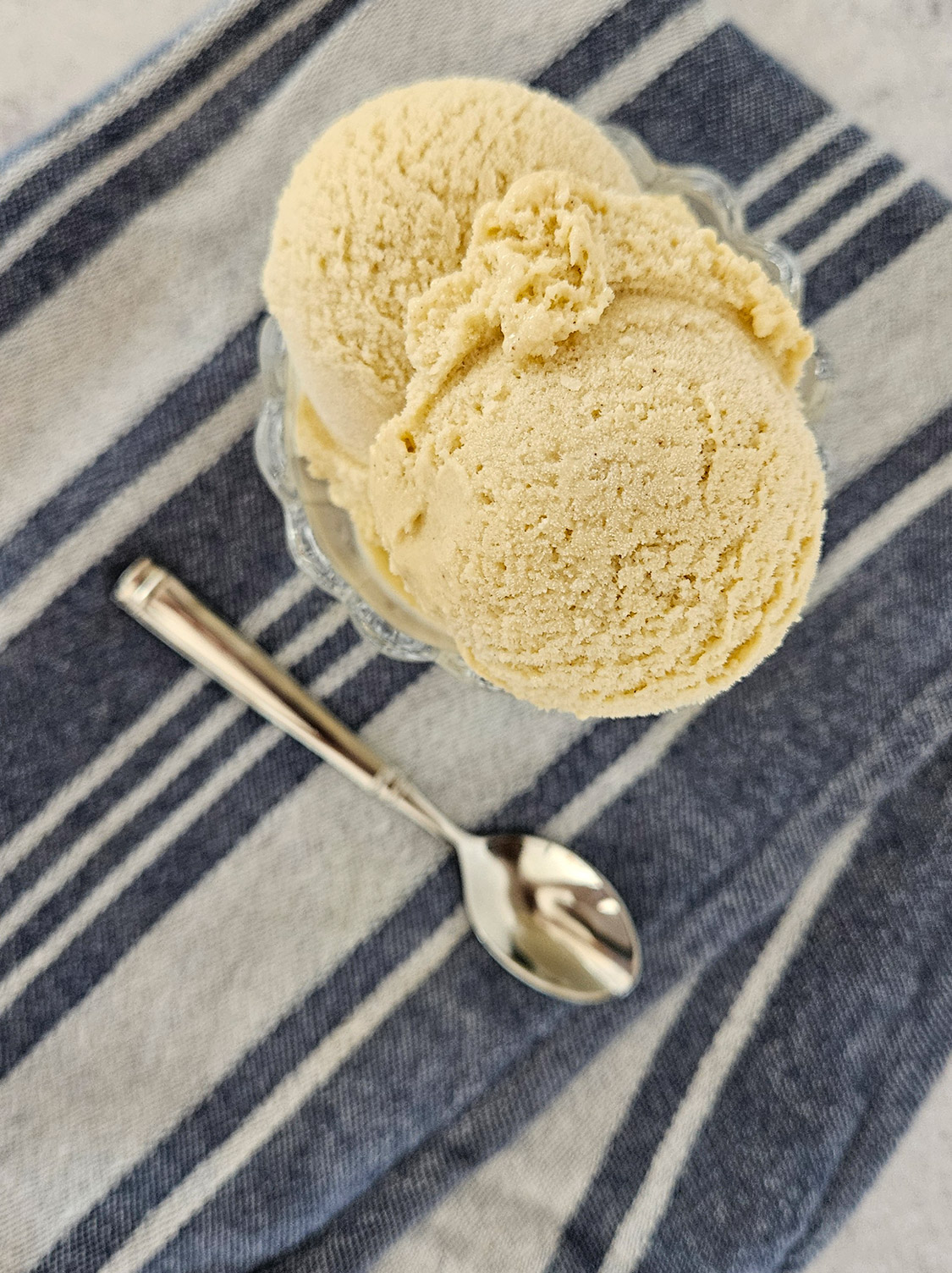

-
5Hr Total Time
-
30M Prep Time
-
5 Ingredients
-
4-6 Servings
Sunny spent years mastering this Custard Freeze recipe to help satisfy her sweet tooth. Now you can try it yourself! Incorporating eggs into a sweet treat like this is a great way to add richness and texture.
Ingredients and Directions
Directions
Heat coconut cream in a pot over medium heat to 170°F.
Temper the egg yolks and then add egg yolk mixture back into the hot coconut cream. (To temper egg yolks, drizzle a portion of the hot coconut cream into the egg yolks while whisking. This prevents the egg yolks from cooking and turning into scrambled eggs once added into the hot coconut cream.)
Continue to whisk mixture over low heat for 2-3 minutes until mixture thickens slightly. Mixture should be around 170°F. For food safety, always ensure eggs are cooked to 160° F and/or use pasteurized eggs.
Remove pot from heat and place in an ice bath. Stir the mixture to cool. If using regular honey, you can add honey and flavorings at this time. If using raw honey, cool the mixture to 105°F before adding in the honey.
Cool and then freeze mixture.
Once frozen, remove from the freezer and allow to thaw at room temperature.
Add mixture to food processor or blender and process until mixture reaches the consistency of soft serve ice cream.
Serve immediately or transfer to a container and freeze for later. Enjoy!
Ingredients
- 1 13.5 oz. can coconut cream
- 2 egg yolks
- 1/4 cup honey
- 1 1/2 tsp. vanilla extract
- 1/2 tsp. almond extract
Tips
Try Sunny’s favorite toppings for this Custard Freeze recipe! For matcha frozen custard, remove the almond extract and add 1 1/2 tbsp matcha powder after removing mixture from heat. For chocolate frozen custard, remove the almond extract, mix in 1/4 cup cocoa into the coconut cream in the beginning and then once you remove the mixture from the heat, add in 0.5 oz dark chocolate and mix until chocolate has melted. For coffee frozen custard, remove the almond extract and add 2 tsp of instant coffee into the mixture while it’s hot.
To ensure food safety, eggs should be cooked until both the yolk and the white are firm. Consuming raw or undercooked eggs may increase your risk of foodborne illness, especially for those with certain medical conditions. For recipes that call for eggs that are raw or undercooked when the dish is served, use either pasteurized shell eggs that have been treated to destroy Salmonella, or use pasteurized egg products.




